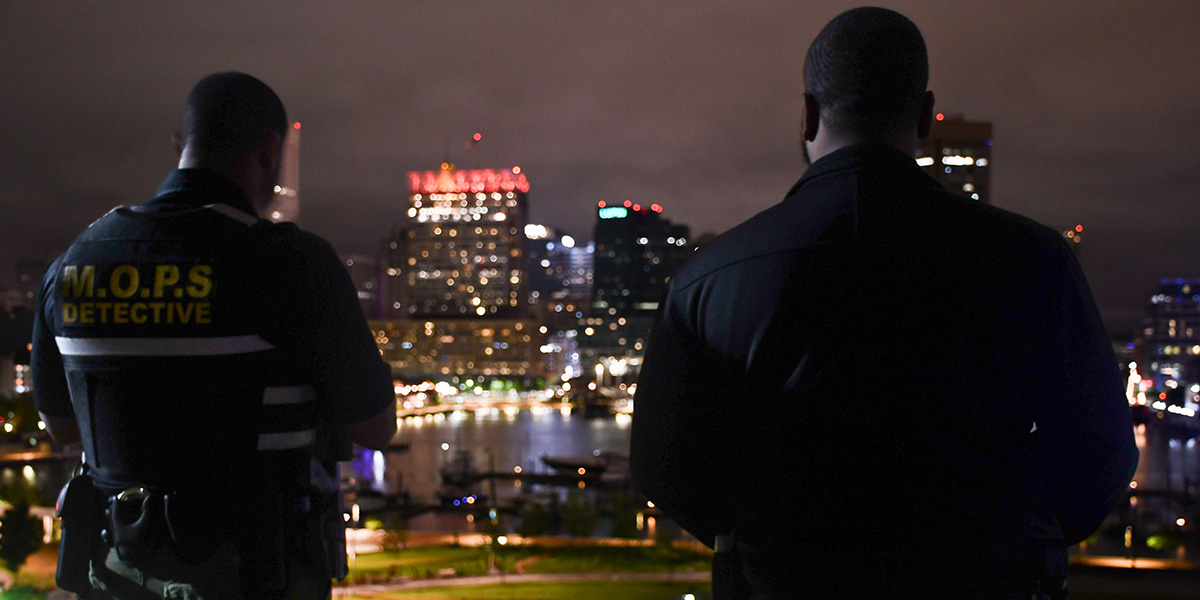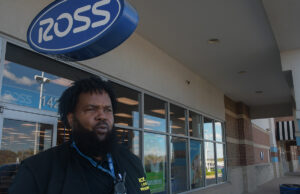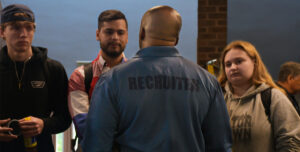Policing Baltimore’s Federal Hill when you’re not the police
July 4, 2024

By Rachel McCrea and Alisha Camacho, Capital News Service
This story is part of a Capital News Service series investigating declining law enforcement numbers and the rise of private security in Maryland. The series, published on The Baltimore Banner, uncovers regulation gaps, misconduct, upcoming reform, and police-guard relations.
Read Part 1: More companies in Maryland hiring private security guards to ward off crime
Read Part 2: Fewer people want to become police officers. What can be done about it?
Interactive web layout
While working on the private policing series, I also took an interactive design course with Gagan Nirula, the digital strategist for the National Association of Broadcasters.
Gagan "lives and breathes code and design." Learning how to code and design websites was a skill l eagerly pursued as a graduate student. Especially after launching three WordPress sites as the Communications Manager at the Washington Area Community Investment Fund. These experiences sparked my love for web design. But I knew I had much more to learn.
For my final project in Gagan's class, I developed an interactive HTML page to host the story "Policing Baltimore's Federal Hill when you're not the police."
While researching private policing, I read Eli Saslow's story, "He's a Dab of Glue in a Broken City. Can He Hold It Together?" in The New York Times. Saslow's in-depth feature, paired with Erin Schaff's stunning photography and a gorgeous, immersive web layout, shaped my vision for the design and art direction for our story.
As a novice night photographer, I faced several challenges while documenting our time shadowing private police officers in Baltimore. Their reflective vests made flash photography impractical, and the fast-paced environment left me with little time to set up shots. I alternated between taking photos and sprinting to get ahead to caputre the action. Without a tripod, I relied upon my body, benches, rocks, and tree stumps to stabilize my camera keep shots as sharp as possible.
I also didn't anticipate how difficult it would be to see the camera buttons in the dark, even under city lights. Every second counted, yet I struggled to adjust the settings quickly enough before the moment passed. Espeically because I was using a borrowed camera I hadn't fully mastered. By the second night, I adapted. I marked key buttons with white masking tape color-coded with highlighters to navigate the camera in the dark.
While my final photos didn't reach Erin Schaff's caliber (obviously), they played a crutical role in our storytelling. Strict word count limitations forced us to cut important details. And so, the photos gave us more control over the final narrative.
Since The Baltimore Banner published the private policing series as an exclusive, I was thrilled to use my interactive design project to bring our original art direction to life. I applied everything I had learned about responsive design, drawing inspiration from The New York Times's web layout.
Like most creatives, I spot things I'd tweak every time I revisit the web page. But overall, I'm proud of how it turned out.


